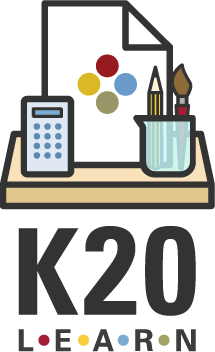Summary
In this lesson, students explore the relationship between different linear representations: algebraic, numerical, graphical, and verbal. Students will translate between graphs, tables, equations, and written descriptions. Students also learn how to create an equation from a table using the TI-30XS MultiView calculator.
Essential Question(s)
How can we represent a linear function in different ways?
Snapshot
Engage
Students choose between two different job offers that have different pay rates and starting bonuses then justify their reasoning.
Explore
Students recall their prior knowledge of linear functions and use a given story to create a table, a graph, and an equation through a scaffolded activity.
Explain
Students deepen their understanding of translating between equivalent linear representations and learn how to use a calculator to generate an equation from a table.
Extend
Students visit stations and practice translating between representations, developing their flexibility.
Evaluate
Students demonstrate their understanding by independently creating a table, graph, and equation from a story.
Materials
Lesson Slides (attached)
Exploring Linear Relationships handout (attached; one page per group; print one-sided)
Graph handout (attached; one per student; print one-sided)
Guided Notes handout (attached; one per student; print two-sided)
Guided Notes (Model Notes) document (attached)
Calculator Guide handout (attached; one per student; print one-sided)
Function Fieldwork Stations document (attached; one set per class)
Function Fieldwork handout (attached; one per student; print two-sided)
Function Fieldwork (Sample Responses) document (attached)
Algebra Mad Libs handout (attached; one set per group; print one-sided)
Chart paper (one per group)
Highlighters (variety of colors; one per student)
Pencils
Paper
TI-30XS MultiView calculators (one per student)
Preparation
During the Explore phase, students work in groups of 2–3 to create a poster. Dedicate space in your classroom for students to hang their posters and ensure that there is enough space to comfortably walk around to read each poster. If space is limited, consider using the hallway.
Each group needs one page from the attached Exploring Linear Relationships handout. This handout contains 10 pages, each with similar scenarios with different values. The goal is for each group to have a unique scenario. Print enough copies of the handout so that each group has one page.
Engage
10 Minute(s)
As students enter the classroom, display slide 3 from the attached Lesson Slides. To begin the lesson, ask students to read the given scenarios and decide which job option they would prefer.
Direct students to think independently about the reason for their choice, then indicate their choice by moving to the side of the room that corresponds to their choice. As students move, remind them to not discuss the answer with their friends or neighbors yet.
Display slide 4 and introduce the Philosophical Chairs strategy. Have students discuss their choices with peers on the same side of the room for 1–2 minutes. Then, ask a volunteer from Option A to share their reasoning with the class, followed by a volunteer from Option B. Repeat with new volunteers from each side. Review each of these with students to the extent you feel necessary.
Use student responses as a formative assessment to gauge their understanding of starting values and rates of change. Address any misconceptions before proceeding.
Show slide 5 to share the lesson’s essential question with students. Transition to slide 6 to identify the lesson’s learning objectives. Review each of these with students to the extent you feel necessary.
Explore
30 Minute(s)
Have students get into small groups of 2–3 students or assign groups so that there are ten groups. Display slide 7 and give each group one page of the attached Exploring Linear Relationships handout. Instruct groups to use the given story to create a table, then generate a graph, and finally write an equation.
As students work, circulate the room to monitor progress. When most groups are nearly finished, transition to slide 8. Distribute a piece of chart paper and a copy of the attached Graph handout to each group. Explain that they should transfer their answers from the handout onto the poster. For the graph, students should draw on the Graph handout and attach it to their posters. If desired, they may also color or decorate their posters.
This is a good stopping point. Collect student posters and save them for the next class period. Begin the next class by displaying the posters around the room.
Explain
35 Minute(s)
Display slide 9 and have students hang their posters. Conduct a modified Gallery Walk and explain that students should visit a peer’s poster, identify patterns, and highlight one observed pattern. They will repeat this process for a second round.
Distribute one highlighter per group and have them analyze another group’s poster. Instruct students to highlight a pattern or similarity among the table, graph, and equation. Use hidden slide 10 as an example but do not show it to students, as it reveals what they should discover independently. Give students about 5 minutes for this task.
After they have highlighted one poster, transition to slide 11. Instruct students to analyze a different poster that has a highlight color different from their own. They should identify and highlight another pattern or similarity. This second pattern may be more challenging to find, so allow another 5 minutes.
Transition through slides 12–13 and facilitate a whole-class discussion about what they discovered through this activity. Use this time to introduce the terms initial value and rate of change.
Display slide 14 and distribute the Guided Notes handout. At this stage, students are only focusing on the connections between the representations that have lines connecting them. These include:
Story and table
Table and graph
Graph and equation
Equation and story
(Other connections will be discussed later.)
Transition through slides 15–18 and complete the front side of the handout as a class. Instead of directly explaining the connections, ask guiding questions to prompt students to articulate their observations. Encourage the use of academic language as they describe connections between the different representations. Have students write their connections on the provided lines between the different representations. Use the Guided Notes (Model Notes) document as needed.
Display slide 19 and pose the question: “Is it necessary to transition between representations in the same order (from story → table → graph → equation) every time?” Could they translate from a form in one corner of their notes to the form in another corner? Facilitate a brief discussion, then transition through slides 20–21. Have students draw diagonal lines between the opposite corners to indicate the flexibility of being able to translate to and from any given form.
Display slide 22 and direct students’ attention to the bottom of their handout. Ask for volunteers to share the different ways to represent slope and y-intercept. The goal for this portion of the handout is to create an exhaustive list summarizing key concepts in the graphic organizer.
Have students retrieve their calculators following regular classroom procedures. Direct their attention to the example on the back of their Guided Notes handout. Display slide 23 and guide the class through creating a table from a given story. Move to slide 24 to reveal the completed example.
Display slide 25 and distribute a copy of the attached Calculator Guide handout to each student. Explain that students will now use their calculator to generate an equation from the table. Have them follow along with their handout as you walk them through the steps.
To conclude the example, instruct students to independently graph the linear function. As they work, transition to slide 26 so they can check their results.
Extend
25 Minute(s)
Students will now apply their knowledge by translating between different linear representations. Display slide 27 and assign students into groups of 4. Have each student choose from one of the following job titles:
Ecologist
Wildlife Biologist
Solar Technician
Climatologist
Assign each group to a different station, then display slide 28 to introduce the activity. Explain that:
Each station provides one representation (e.g., a table, graph, equation, or story).
Each group must create the other three representations based on the given one.
During each round, one student will have no assigned task—this student is responsible for helping the team complete the task on time and for leading the group discussion.
Give each student a copy of the attached Function Fieldwork handout and transition to slide 29. Instruct students to locate the first table (Round 1) and write the number of the station (from the page at the station) on their handout. Remind students that the handout at the station has a task listed for each person based on their job title. Give students three minutes to translate their given representation into their assigned representation.
Once students finish writing their representation, move to slide 30. Give students two minutes to discuss and compare their work.
Repeat these steps for rounds two, three, and four.
As students work at stations, circulate the room and provide support as needed. Use the attached Function Fieldwork (Sample Responses) document as a reference.
Evaluate
10 Minute(s)
Have students find a partner or assign partners. Display slide 31 and distribute the attached Algebra Mad Libs handout, giving one page to each student.
Explain that students will ask their partner for the indicated parts of speech to fill in the blanks in their story. For example, a student with the Student A handout would ask their partner, Student B, for a name to complete the first blank. Use slide 32 as needed to model the activity. Give students 3–4 minutes to complete both stories.
Move to slide 33 and have students trade papers. Then, instruct them to:
Read their completed Algebra Mad Libs story.
Create a graph with appropriate labels.
Construct a table with at least five data points.
Write an equation representing their story.
Collect student work and review for accuracy and common misconceptions.
Resources
K20 Center. (n.d.). Gallery walk / carousel. Strategies. https://learn.k20center.ou.edu/strategy/118
K20 Center. (n.d.). Philosophical chairs. Strategies. https://learn.k20center.ou.edu/strategy/71


